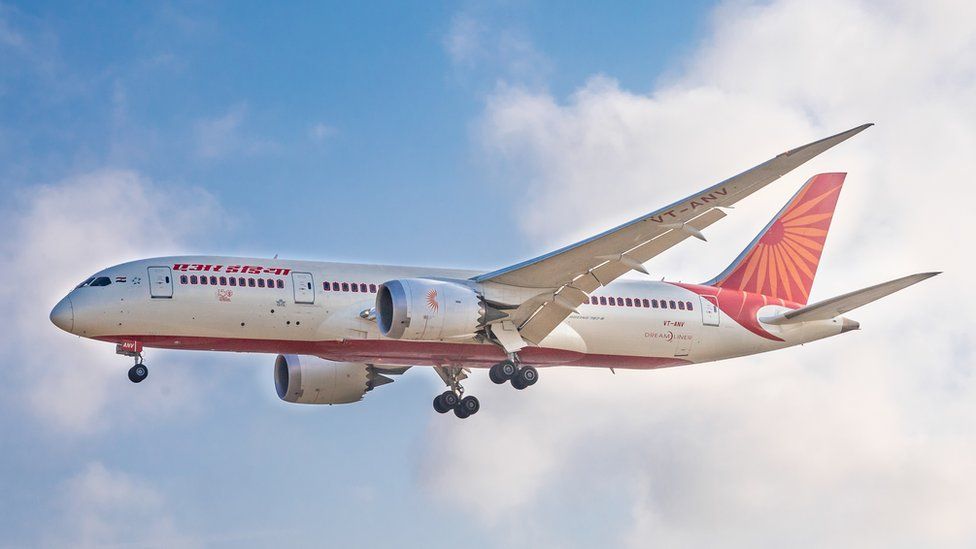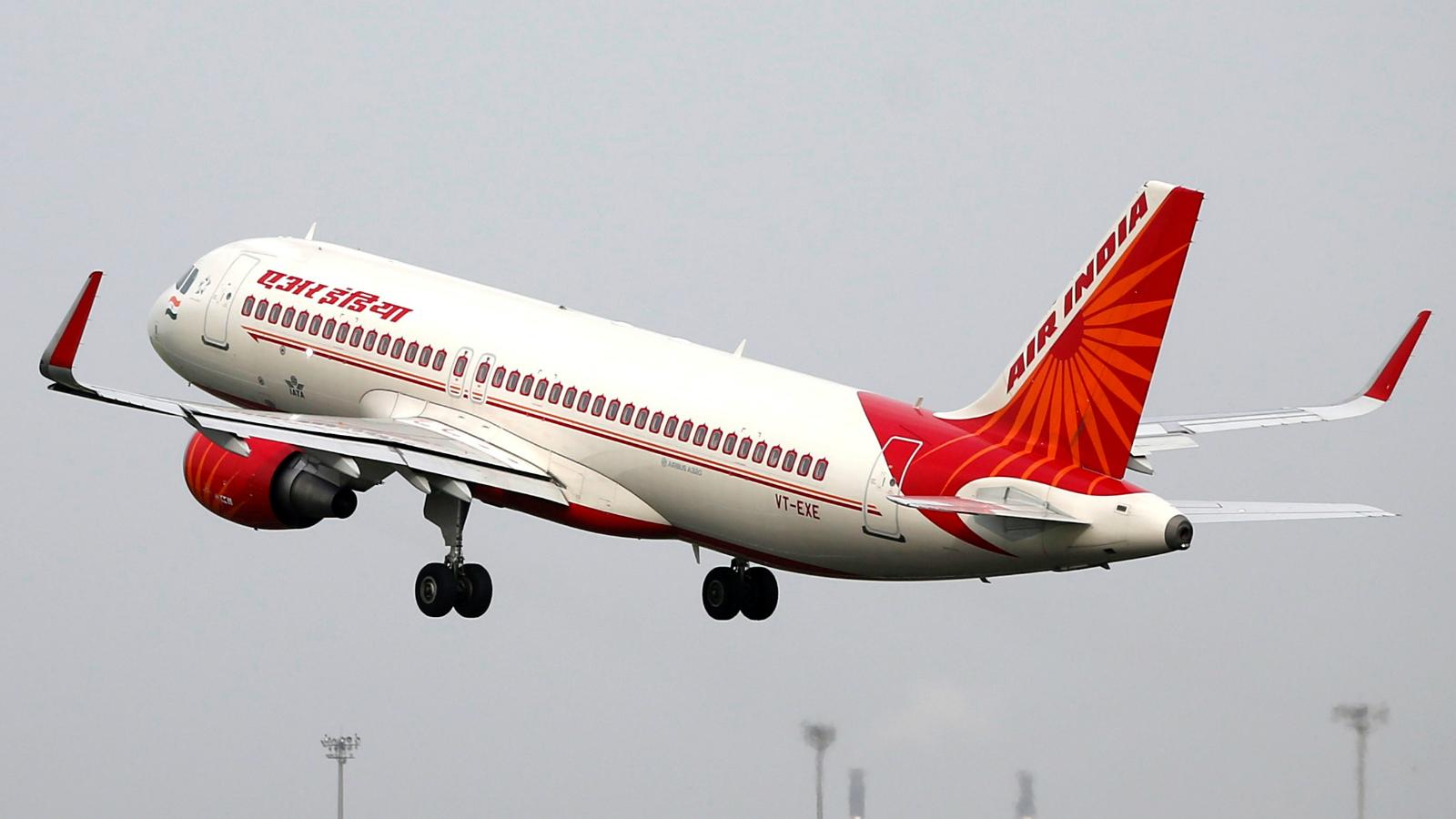Air India is India’s flag air carrier with a significant market position in international and domestic operations. Air India along with Air India Express Limited has 50.64% share of the international traffic to and from India among Indian carriers and has 18.4% share including global airlines (ex India) as of Q2 FY20.
The two airlines combined control around 12.7% of the Indian domestic market as of Q2 FY20. Air India is a member of the Star Alliance since July 2014.
AI has pioneered India’s civil aviation sector (first scheduled airline in India) and has a rich heritage of over 87 years.
It is one of the most extensive flight service providers in India with network coverage of 98 destinations (56 domestic destinations with around 2,712 departures per week and 42 international destinations with around 450 departures per week) as on November 1, 2019.

Air India offers 75 additional destinations through its secondary network of code share operations covered under 25 code share agreements with foreign carriers. During FY 2019, AI carried around 22.1 Million passengers and recorded operational revenues of INR 255,088 Million.
The airlines has an aircraft fleet of 121 aircraft (excluding 4 B747-400 aircraft) as on 1st November 2019, mainly comprising Airbus and Boeing aircraft such as A-319, A320, A-321, B-777 and B-787 out of which 65 are owned/ on finance lease/bridge loans, 21 are on sale and lease back model and balance 35 are on operating lease.
Current Organization Structure
As a part of the disinvestment, 100% equity stake in AI along with AI’s 100% equity stake in AIXL and AI’s 50% equity stake in AISATS is being disinvested by the Government of India. AI has interests in other entities (Air India Engineering Services, Air India Air Transport Services, Airline Allied Services and Hotel Corporation of India) which are in the process of being transferred to a separate company – Air India Assets Holding Limited (“AIAHL”) and will not be a part of the Proposed Transaction.
Current Structure
History
Air India represents the merged company, which came into existence post the amalgamation of Indian Airlines Limited and AI on 1st April 2007. The amalgamated company was known as National Aviation Company of India Limited (NACIL). The name of the company was changed to “Air India Limited” with effect from 24th November 2010. AI has a rich heritage of over 87 years (set up in 1932) and has pioneered India’s civil aviation sector (first scheduled airline in India).
Branding and Marketing
Brand “Air India” enjoys enormous goodwill and reputation in India and worldwide. The brand comprising of, inter alia, the words “Air India”, the “Maharaja logo”, the “Flying Swan” Air India logo and the “Sun logo”, are all registered trademarks in India.”The logo of the new airline is a red coloured flying swan with the ‘Konark Chakra’ in orange, placed inside it. The flying swan has been morphed from Air India’s characteristic logo, ‘The Centaur’, whereas the ‘Konark Chakra’ is reminiscent of Indian’s logo”.
The new logo features prominently on the tail of the aircraft. While the aircraft is ivory in colour, the base retains the red streak of Air India. Running parallel to each other are the orange and red speed lines from front door to the rear door, subtly signifying the individual identities merged into one. The brand name ‘Air India’ runs across the tail of the aircraft.
Logo/Livery
“The logo of the airline is a red coloured flying swan with the ‘Konark Chakra’ in orange, placed inside it. The flying swan has been morphed from Air India’s characteristic logo, ‘The Centaur’, whereas the ‘Konark Chakra’ is reminiscent of Indian’s logo”.
The new logo features prominently on the tail of the aircraft. While the aircraft is ivory in colour, the base retains the red streak of Air India. Running parallel to each other are the orange and red speed lines from front door to the rear door, subtly signifying the individual identities merged into one. The brand name ‘Air India’ runs across the tail of the aircraft.
The Maharajah
We call him a Maharajah for want of a better description. But his blood isn’t blue. He may look like royalty, but he isn’t royal.’ These are the words of Bobby Kooka, the man who conceived the Maharajah.
This now familiar lovable figure first made his appearance in Air India way back in 1946, when Bobby Kooka as Air India’s Commercial Director and Umesh Rao, an artist with J.Walter Thompson Ltd., Mumbai, together created the Maharajah.
The Maharajah began merely as a rich Indian potentate, symbolizing graciousness and high living. And somewhere along the line his creators gave him a distinctive personality: his outsized moustache, the striped turban and his aquiline nose.
Also Read: American Airlines – The Brand Strategies Of World’s Largest Airlines
What began as an attempt as a design for an inflight memo pad grew to take Air India’s sales and promotional messages to millions of travellers across the world. Today, this naughty diminutive Maharajah of Air India has become a world figure. He can be a lover boy in Paris, a sumo wrestler in Tokyo, a pavement artist, a Red Indian, a monk… he can effortlessly flirt with the beauties of the world. And most importantly, he can get away with it all. Simply because he is the Maharajah!
He has completed 56 years and become the most recognizable mascot the world over. His antics, his expressions, his puns have allowed Air India to promote it’s services with a unique panache and an unmatched sense of subtle humour. In fact he has won numerous national and international awards for Air India for humour and originality in publicity.
And as with all great men, he too has had his critics. But the millions of travellers whose lives he has touched far outnumber them. In fact, to them, the Maharajah with his inimitable style, charm and wit is a very real person. He’s almost like a friend to every Air India traveller. A friend who reaches out with warmth and hospitality, even to the farthest corners of the world.
Brand Equity
Brand equity is the value premium generated from a product when compared to the generic equivalent. It operates one of the youngest fleets in the world and regular upgrades ensure that they provide a superior flight experience to its customers.
- It is a full member of the Star Alliance Network
- Won Reader’s Digest Trusted Brand Gold Award
- Received IATA Safety Audit for Ground Operations (ISAGO) recognition for ground services
- Won Emerging Freighter Services of the Year Award at Air Cargo India Exhibition and Conference
- Won PATWA International award at ITB, Berlin, as Best Asian Airline from Europe to India
- Won Galileo Express Travel World Award, for Best Short-haul International Airline from India
The marketing strategy of Air India is quite adequate, but the panorama of the market is gigantic. Many competitors have arisen since the launch of the company. Let’s dig deeper into it.
Competitive Analysis
Whether the famous Maharaja mascot or the fact that the public sector undertaking is backed by the government and many others have collectively helped Air India to emerge as the largest international Carrier out of India. With more than 1400 pilots and 2100+ cabin crews, Air India is reaching out to more than 30 countries globally in addition to domestic locations.
Air India commands more than 16% market share through its international operations.
Cost structure plays a pivotal role in the operations and competitive landscape of the companies operating in the industry which consists of fuel, administrative cost, rental of flight equipment, ticketing sales & promotions, user charges, Pax services, flight crew Salary & expenses.
Air India along with its wholly-owned Kochi based subsidiary Air India Express Limited (AIEL) compete with companies like
- Indigo
- Jet Airways
- Go Air
- Air Asia
- Jet Airways
- Spicejet
And more in the national & regional market. While companies like
- Etihad
- Oman Air
- Thai Airways
- Singapore Airlines
- Emirates
This graph depicts the market share of major airlines, based on international traffic in 2019.

